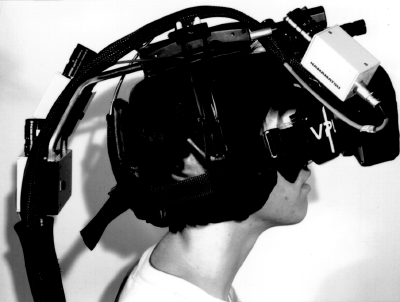Back to failing technologies... this piece on CNN Money from 2004 gives an intriguing snapshot of the problems encountered by "users" of the Prada building designed by Rem Koolhaas. As described in this article, this cutting-edge architecture was supposed to "revolutionize the luxury experience" through "a wireless network to link every item to an Oracle inventory database in real time using radio frequency identification (RFID) tags on the clothes. The staff would roam the floor armed with PDAs to check whether items were in stock, and customers could do the same through touchscreens in the dressing rooms". Some excerpts that I found relevant to my interests in technological accidents and problems:
"But most of the flashy technology today sits idle, abandoned by employees who never quite embraced computing chic and are now too overwhelmed by large crowds to coolly assist shoppers with handhelds. On top of that, many gadgets, such as automated dressing-room doors and touchscreens, are either malfunctioning or ignored (...) In part because of the crowds, the clerks appear to have lost interest in the custom-made PDAs from Ide. During multiple visits this winter, only once was a PDA spied in public--lying unused on a shelf--and on weekends, one employee noted, "we put them away, so the tourists don't play with them."
When another clerk was asked why he was heading to the back of the store to search for a pair of pants instead of consulting the handheld, he replied, "We don't really use them anymore," explaining that a lag between the sales and inventory systems caused the PDAs to report items being in stock when they weren't. "It's just faster to go look," he concluded. "Retailers implementing these systems have to think about how they train their employees and make sure they understand them," (...) Also aging poorly are the user-unfriendly dressing rooms. Packed with experimental tech, the clear-glass chambers were designed to open and close automatically at the tap of a foot pedal, then turn opaque when a second pedal sent an electric current through the glass. Inside, an RFID-aware rack would recognize a customer's selections and display them on a touchscreen linked to the inventory system.
In practice, the process was hardly that smooth. Many shoppers never quite understood the pedals, and fashionistas whispered about customers who disrobed in full view, thinking the door had turned opaque. That's no longer a problem, since the staff usually leaves the glass opaque, but often the doors get stuck. In addition, some of the chambers are open only to VIP customers during peak traffic times. "They shut them down on the weekends or when there's a lot of traffic in the store," says Darnell Vanderpool, a manager at the SoHo store, "because otherwise kids would toy with them."
On several recent occasions, the RFID "closet" failed to recognize the Texas Instruments-made tags, and the touchscreen was either blank or broadcasting random video loops. During another visit, the system recognized the clothes--and promptly crashed. "[The dressing rooms] are too delicate for high traffic," says consultant Dixon. "Out of the four or five ideas for the dressing rooms, only one of them is tough enough." That feature is the "magic mirror," which video-captures a customer's rear view for an onscreen close-up, whether the shopper wants one or not."
Why do I blog this? It's a rather good account of technological failures, possibly useful to show the pain points of Smart Architecture/Cities. The reasons explained here are all intriguing and some of them can be turned into opportunities too ("otherwise kids would toy with them.")
That said, it'd be curious to know how the situation has changed in 7 years.
 Design failures and recurring non-products is of course a favorite topic of mine. Hence, a paper entitled "
Design failures and recurring non-products is of course a favorite topic of mine. Hence, a paper entitled "
 Last Saturday, Julian and I gave a quick and punchy workshop called
Last Saturday, Julian and I gave a quick and punchy workshop called  What's better than a broken iPhone screen in a workshop about accidents and failures?
What's better than a broken iPhone screen in a workshop about accidents and failures?



 The annotated slides from my talk "
The annotated slides from my talk "
 Source: played a little bit with
Source: played a little bit with  Reading the PDFs that accumulate on my computer desktop (see picture above), I ran across two columns by
Reading the PDFs that accumulate on my computer desktop (see picture above), I ran across two columns by 



 Taking some time reading about technological failures, I found this interesting reference by
Taking some time reading about technological failures, I found this interesting reference by 